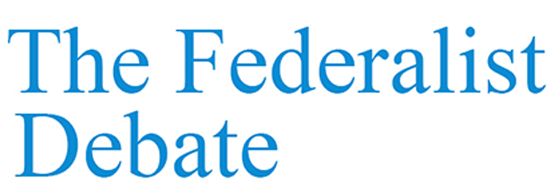Beyond the Eurozone Crises: an Inside Journey
Flavio Brugnoli
Director of Centro Studi sul Federalismo
Marco Buti
The Man Inside: A European Journey through Two Crises
Bocconi University Press, Milan, 2021
There are many books on the Eurozone and its crises, but one that discusses “economic policy formation and thinking in real time” presents a unique opportunity for an in-depth review of a decade of turbulent and at times dramatic events in Europe. This is the case with the excellent The Man Inside, by Marco Buti, who, between 2008 and 2019, was Director-General for Economic and Financial Affairs at the European Commission (which he joined in 1987) and is currently the Head of Cabinet of the Commissioner for Economy, Paolo Gentiloni.
The book covers two crises that hit the Economic and Monetary Union (EMU) and shook the architecture of the Eurozone: the global financial crisis and the pandemic. It consists of six parts, covering the most relevant issues with a well-balanced mix of economic, political and institutional analytical tools, and includes 42 chapters, most of which previously published in CEPR’s VoxEU and co-authored with other economists and/or Buti’s colleagues at the Commission. Therefore, the book is a fascinating mix of “mainstream” views, which fuel public debate and add transparency to the decision-making process, and of fruitful opportunities for “thinking out of the institutional box”.
The long journey leading to the EMU has already seen several generations of EU civil servants shape the European integration project. As Marco Buti highlights, after the “Pioneers”, who had peace as their beacon and goal, it was the turn of the “Architects”, who set the institutional architecture of the Single Market and the launch of the euro. After the creation of the EMU, the torch has now passed on to the “Builders” (to whom Buti belongs) who, learning from past weaknesses and mistakes, are moving forward to deepen European integration.
After the successful first decade of the euro, which resulted in a widespread but (with hindsight) fragile stability, the explosion of the first crisis, in 2007-2008, showed that the European institutions had a weak and short-sighted toolbox to tackle it. Moreover, as Buti emphasizes, the fact that the epicenter of the crisis was Greece’s public finances severely affected the whole EU approach to the crisis, and led to the relevance and systemic impact of the banking and financial sectors’ crises being underestimated.
Confronted with what soon became an existential threat to the Eurozone, the primary need was to preserve the integrity of the euro. At the time, the focus was on structural reforms and rule-based fiscal prudence – what Buti calls the “Brussels-Frankfurt consensus”. The need to restore credibility to the markets whilst trust amongst countries was severely lacking, prompted a reliance on asymmetric adjustments, which have then been labeled as “austerity”. Indeed, Buti explains well that the rules were neither so inflexible nor so inappropriate, but what was mainly wrong was the sequencing of policies.
At that time, what had become a “government by-crisis” saw intergovernmentalism prevail, with (strong) Member States in the driving seat, on supranationalism, with EU institutions in charge. The intergovernmental approach was an emergency option, but it seriously affected the quality and timing of the actions taken. The narrative became one of North vs South, (good) creditors vs (bad) debtors, risk reduction vs risk sharing, responsibility vs solidarity. This scenario probably propelled populism and sovranism, which in 2016 was aggravated by the Brexit referendum and the election of Donald Trump.
Sometimes European public opinion undervalues the difficulties and conundrums in designing timely and viable tools for tackling crises. Marco Buti offers us (in a paper written jointly with George Papaconstantinou) a useful compass to find a way through the labyrinths of European decision-making. It is what he calls the “Monnet Compatibility Test”, which relies on three pillars: economic coherence, as policy tools and mechanisms should be effective; institutional coherence, as the right level(s) of government should be involved, based on subsidiarity; political coherence, as public support is of the utmost importance in implementing policies.
The European Commission’s role can hardly be overestimated in the crises we have experienced. As Buti points out, we have seen a significant evolution in the Commission’s political role and economic stance. It has gradually played many roles, notably as referee, consensus builder, integration promoter, enforcer of rescue programmes, and enabler of policy plans. After the emergency phase of the financial crisis, there was a (sometimes painful) learning process, in which the personality and leadership of the Commission’s Presidents played an important role. Since President Juncker, the Commission has played a more active role and supported a growth-oriented strategy. Thanks also to this evolution, the reaction to the Covid-19 crisis has been much more coherent and forward-looking.
But even before the disruptive impact of Covid-19, the milestones for strengthening the Eurozone were clear. As Buti’s papers almost obsessively (and rightly so) stress, building an EU fiscal capacity, performing a centralized stabilisation function complementary to national public finances, is a key element in moving towards a Fiscal Union and fostering European integration. This process would also require, at least, a completion of the Banking Union and the Capital Union. Covid-19 presents an (unwelcome) opportunity, due to the different nature of the two crises discussed in this book: the financial crisis seen as endogenous, the pandemic as exogenous; the former burdened by “bad” debt, the latter rescued by “good” debt.
National governments have struggled to understand that interdependence and shared sovereignty is at the heart of how the Eurozone functions. Next Generation EU, and the steps that have made it possible (notably, the issuance of EU public debt) may represent, according to Buti, a “quantum leap in EU integration”. We have moved from restrictive emergency measures, at the beginning of the financial crisis, to a package of measures for sustainable growth, focused on investments and reforms, to counter the crisis caused by the pandemic. The main political challenges and priorities ahead of us are how to make the NGEU a permanent instrument and the Commission a de facto Eurozone Treasury, with the EU playing a proactive role in global economic governance. Or that is what we thought until the nightmare of war returned to Europe.
Buti’s “European journey through two crises” could not have imagined that a new terrible crisis would undermine Europe’s future. After the criminal invasion of Ukraine by Vladimir Putin, we are faced with uncertain and frightening scenarios. We understand that the European project has reached another critical turning point. Although, as Buti reminds us, “going from A to B is not a straight line in Europe”, let us hope that the lessons learned in the last decade will inspire us to show lasting solidarity and determination and to take decisive steps towards a federal European Union.

